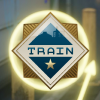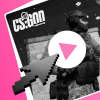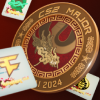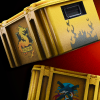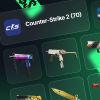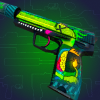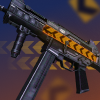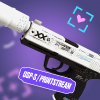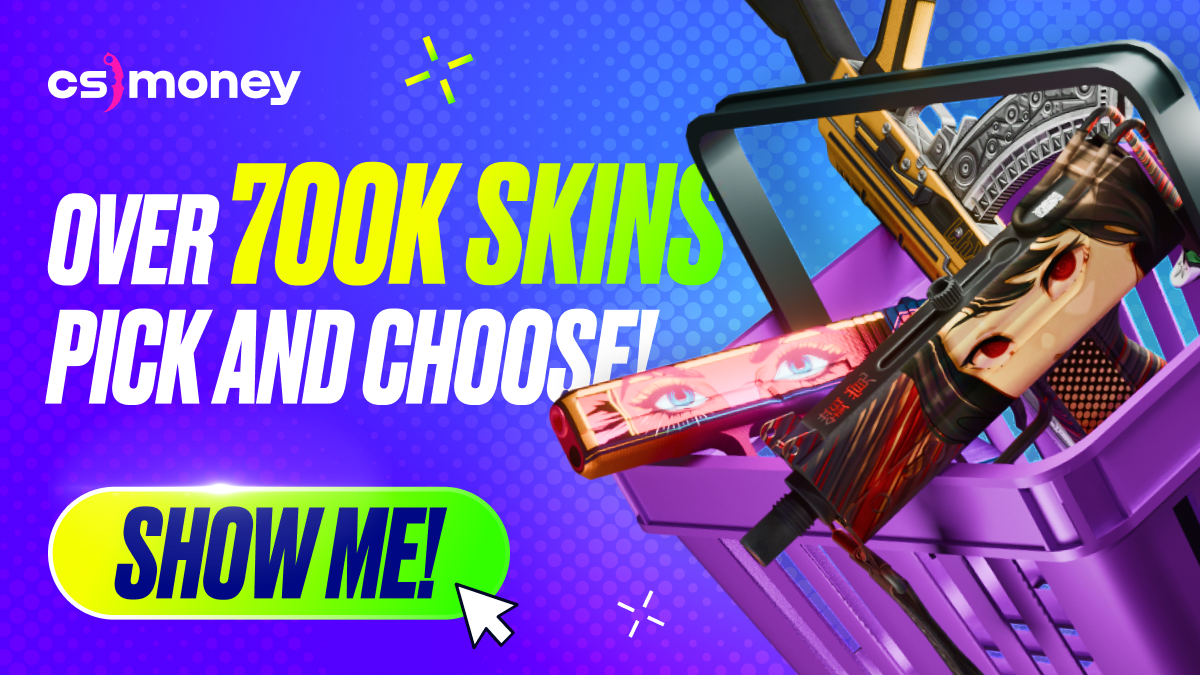Experienced skinmaker, 3D artist, a true professional, and a gaming industry native who quit his job for the sake of skins and decided to do what pleases the heart. Today’s hero, Felix de Puiseau, is the author of the legendary Heavy Metal, Exoskeleton, Leaded Glass, and others.
Felix and his recent P90 Vent Rush guest for another episode of CS.MONEY Blog Recoil Case creators’ interview series. Here, de puiseau talks about skins, the start of his career, style inspirations, his own co-op shooter game, gives advice to newcomers, and more!

Vent Rush and Diesel Power
P90 Vent Rush is de puiseau’s sixth accepted skin. Yet, he was pretty surprised it made it into CS:GO.
de puiseau: I was very surprised because I have not been making skins for almost two years. I’m very lucky and happy that Valve still are considering my skins to be added.
Do you think it has anything to do with your unique style of making skins look like they’re not from the game at all?
I hope so. But it’s cool that they added this one because they don’t think it doesn’t fit the game with this kind of total makeovers.
Were you expecting AK Diesel Power to make it more than Vent Rush?
They have kind of the same style, so the signal that Valve was sending by adding the P90, is that the Diesel Power could make it too.
Because it’s the same thing. But, that being said, I think that the P90 works better from different angles. The problem with the skins I make is that they work from a specific perspective. But if you spin them around, sometimes the illusion breaks a little bit, and it’s more apparent that the illusion breaks on, for example, longer weapons, like the AWP or AK. So I can understand why they don’t want to add those: they look worse from certain angles.
Why do you do exactly that style?
I would say there’s a clear evolution in my style. The first skin that changed my life was P90 Shapewood. I think I made it in 2015, a long time ago. I was still working at Ubisoft when I made it. And I realized that I could make a living on skins. So I quit my job at Ubisoft to make skins full time. <Laugh>

Ubisoft to going full-time skinmaking
You were working at Ubisoft on Hitman, right?
First, I worked at Ubisoft Sweden, then I switched jobs to IO Interactive in Denmark. I worked on Hitman for two years, then got a more technical position at Ubisoft. Got back to Sweden. And after we finished The Division, Valve accepted P90 Shapewood, and I saw that I could make money. And a year later, I quit to just invest all my time making skins.
What was the game-changer for you to make this decision?
There were two things. Creative freedom, which meant I could do whatever I liked. That’s what I really like with the Steam Workshop because, at Ubisoft, it was more like ‘make these trousers’ or ‘make this character.’ And also, if you make it with a few skins, you can make more money than a normal game industry job.
But there are a lot of skins on the Workshop. So the chances of you getting in the game are very low. Weren’t you afraid of the risks?
I was, and it seemed a bit crazy, but I couldn’t <laugh>, I just couldn’t keep working on the other job because I wanted to spend all my evenings doing skins and you know, after a while, it became too much work. So you need to create time for yourself to do what you want to do. I decided to give it a shot for a few years and see if I could get something more in to keep doing it.
Style Evolution and Inspirations
But now you are back to creating your own game, right?
Well, I started a company one and a half years ago. Me and a few other old colleagues from Ubisoft. We started a freelancing company and have been working on a ghost-hunting game. It’s called Midnight Ghost Hunt.
I did all the weapons there. I would say freelancing for Midnight Ghost Hunt is definitely also something that’s changed my Counter-Strike style. Before I started working on MGH, I did more clean 3D stuff, like Deagle and Mac-10 Exoskeletons. And after I started working, I learned ADOBE Substance Painter, which changed my workflow, so I could do more advanced stuff. So then I started to do these more textured skins, like the Diesel Power collection.
That is my explanation for that style. It comes from MGH, I would say, mixed with my previous experiments.
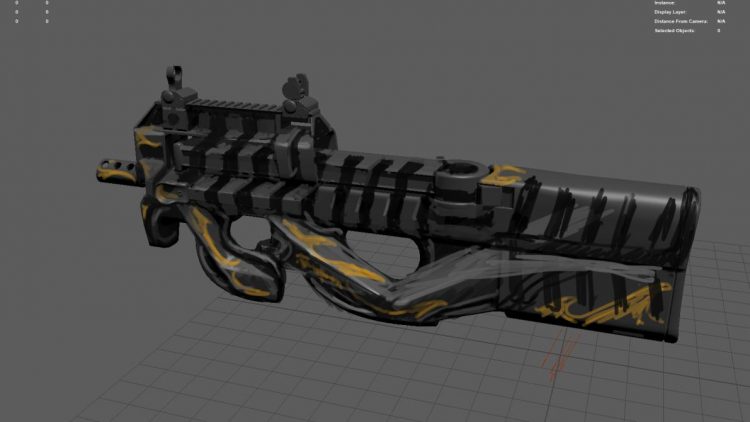
Besides this P90, you have various skins that got into CS, for example, SG Heavy Metal or AWP Leaded Glass. But they’re entirely different. What inspires you? Does it come from the inside and you create, or do you set up a plan and follow it step by step?
Sometimes, I don’t really know what to do, so I go to do drawings like with the P90 concept. I just try to do different stuff. And when something looks interesting to me, I try to explore it and start modeling stuff in Maya3D [modeling software, ed.], maybe do some early tests of simple versions of a skin and run around with it in-game. But usually, I get pretty inspired at that stage when I have a drawing that I think works, then I just go full steam ahead and do it.
Where it all started
How did you start working with modeling, texturing, drawing, and design?
In high school, I went to one of these art programs. You have drawing, photography, video, stuff like that. And my dad was always really into computers. So we always had a couple of PCs at home, I could take friends with us and play games on LAN, you know, Age of Empires or StarCraft, stuff like that. At that time, I also played Oblivion and joined a modeling group forum that wanted to make Morrowind stuff for Oblivion. And I tried to make one of the armors from Morrowind as a mod.
That’s where my interest in 3D started. It was just amazing to do stuff in 3D and be able to spin the models around while I was hanging out on these forums. There was one guy who was taking a 3D education. I didn’t realize then that he could work in games, but when I saw him do it, I thought, maybe I could do it too. I started looking around for education, and found one in Malmö, called The Game Assembly. That’s where I went. It was a really good education. We made eight games over two years, mixed: an art class and a programmer class. And we worked together doing these small games, everything from text-based adventure to click and play.
That’s how I got into doing arts, pretty arts.
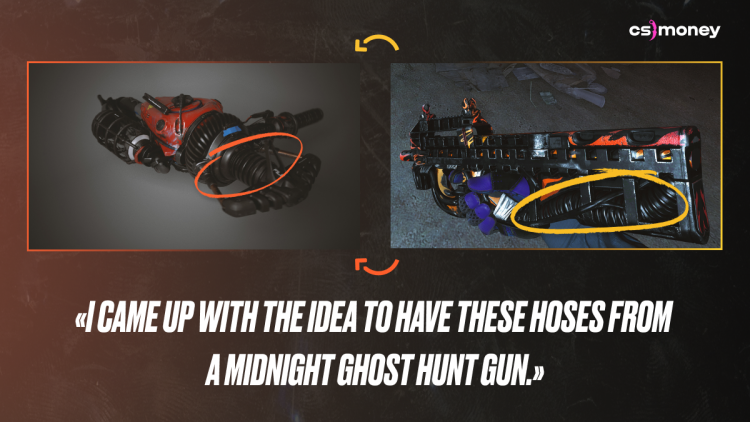
Dota skins and CS:GO skins
Can you compare the experience of doing Dota 2 skins and CS:GO skins since you made both?
It was very hard for me because I’m not a Dota player, so it’s hard to know what works and doesn’t work in that universe. I have played CS since I was 15, so I know what works in the CS:GO universe more than I do in Dota. And I have a very specific style that is hard to get into, and many extremely talented artists are already doing skins for Dota. So maybe I felt like I was a bit late on the ball for doing Dota stuff. These artists have already been there and dominating for years. And they have created their workflows’ techniques to output high-quality stuff. And it takes time to build that foundation, I guess.
It is quicker to do skins in CS:GO. And Dota also felt very limited about what you can do. But also Valve accepts pretty crazy stuff, like Leaded Glass, for example, which is pretty abstract. But it can still make it, that’s what I really love about the CS workshop.
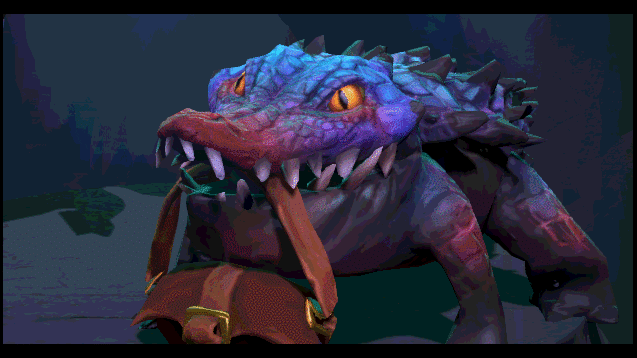
In Dota workshop, you have almost an elite group of people. There’s a very high skill cap to make Dota armors, but in CS:GO, Valve, I feel like they’re trying to keep it on a hobby level. So hobbyists always have a chance to get in because they seem to put more emphasis on that the idea is more important than the execution. I’ve seen many skins that have brilliant ideas and maybe not always so well executed, but they still make it in. And that’s really cool idea by Valve to do it like that.
On own skins and Valorant
Which skin are you most proud of?
It’s a hard question, but I really like the AWP Derailed. When I made that, it looked like so much of a different weapon. Almost like the Scout. <laugh> And AK Diesel Power.
I got a lot of positive feedback on those on Twitter and different places. That’s always very motivating thing for me, to get that kind of ‘wow’ from other CS:GO players.
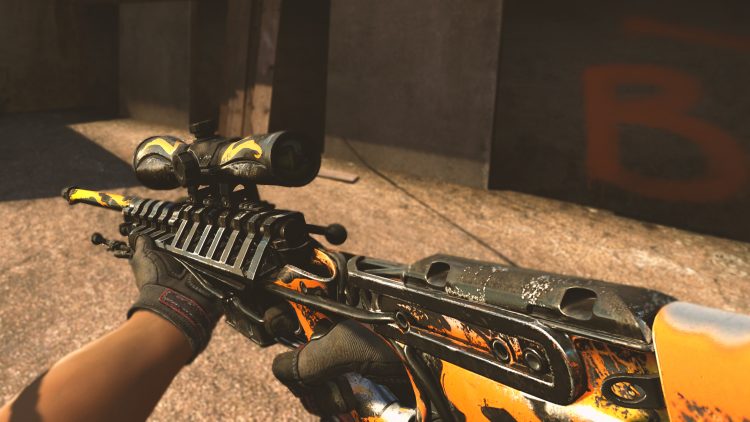
Don’t you think they are a little off the CS:GO overall design? It clicks at a little with Valorant, where skins are completely different from their original ideas. Aren’t you afraid that your style can change the game or your skins will be ignored because they are futuristic-realistic-apocalyptic?
I don’t think that I’m that afraid of that. But in Valorant, the models change so much, they change the silhouette. And I think that’s a good thing that CS doesn’t do that because you can recognize weapons much easier, if like, you want to be able to see an enemy holding an AK, but if it had a dragon for the magazine or was a dragon instead, it could be hard to see. So I think it would be okay to allow for model changes in CS:GO as well, as long as they keep the silhouette very close to the original, or like in almost in a box of the original.
Do you think that they can allow it with the rumored Source 2?
I have no idea about Source 2 or their plans, but it seems they have done many updates on the Workshop tools. I think they could for sure allow model changes and stuff like metalness maps, the PBR textures. That could be easily implemented if they wanted to, and that would be really cool, but I don’t know. It would change a lot if they allowed model changes, have a hard time seeing them do that.
Which skin was the most exhausting and took a lot of time? Was it worth it in the end?
I think, Leaded Glass. When I did it, the Workshop had an update that allowed normal maps. And then they wanted to add Leaded Glass. I had to do an update to add normal maps. And before that, I used to make projections with images, and I had to come up with some way to make them into normal maps, not just flat images but also normal maps. And that solution took a long time to come up with. But when I did, it was totally worth it, of course, because then I could do all other 3D skins.
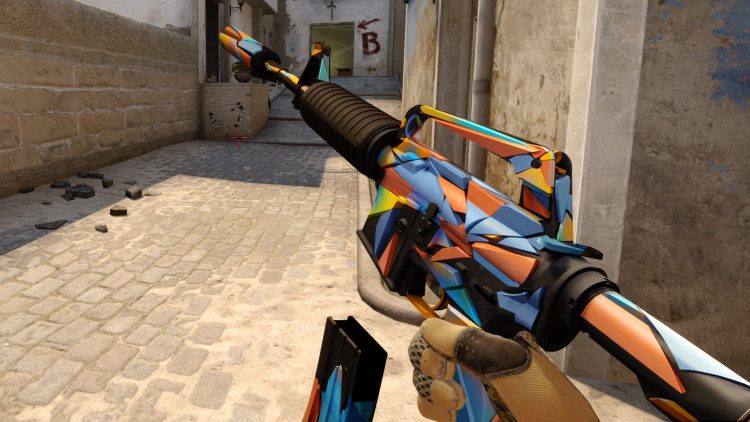
Community and tutorials
Are you friends with other skinmakers? What can you tell about the community? Can you share experiences inside of it, will anyone steal ideas or is it about cheering up and advising?
I talk with many of them. For my part, it’s been mostly positive words and motivating. Sometimes I’ve shown stuff to people, asking, does this look weird or does this look good. Sparkwire and Millennia, I think are the ones that I have spoken the most with because they have similar style. They also are pretty hardcore 3D guys, I think especially Sparkwire is also pushing the boundary quite heavily in CS:GO, which I think is really cool. And Millennia also does 3D, doing it crazy detailed, working in a CAD program, does these perfect 3D models. A master at baking normal maps too. I have a lot of respect for both of them.
What would you advise for the upcoming skinmakers?
Focus on the idea and concept, do a lot of sketches before you start doing something. Focus on the idea stage.
Do you think one day you can teach people?
Not really. I don’t think so, but I’ve thought about trying to make a tutorial for this perspective projection thing, how you can make it with normal maps, basically how I do it, because there’s a lot of people asking, emailing me about it. And it’s hard to explain just in an email, it would be easier to show in a video.
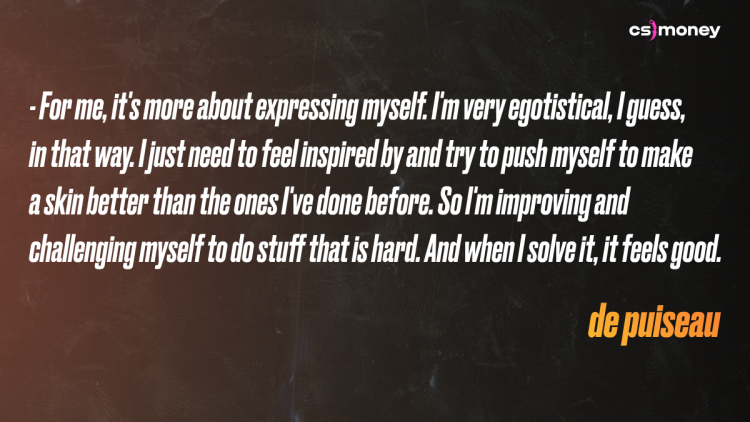
Next Thematic Case To Be…
Would you like to have another thematic case? What the theme would be?
I really liked the polycount competition, it was a sci-fi style. That would be cool. I think that would fit my style quite good. I could do some cleaner skins because I made a lot of dirty skins. Now, maybe I could do some cleaner sci-fi things with a couple of cyberpunk details because I’ve been playing Cyberpun2077 lately. It has a lot of really cool designs. So that could be nice.
By the way, we have a few more interviews with other Recoil Case skin makers:
- Acid Art Combo: P250 Visions by Australian duo Chrissparra and Cimota
- Incredible stories from the author of the Printstream series, JTPZN, including nightmares, a PC case and Nirvana!
- Oldschool skin creator Hexeth talks about Valve’s marketing, money, fears, and skins!



